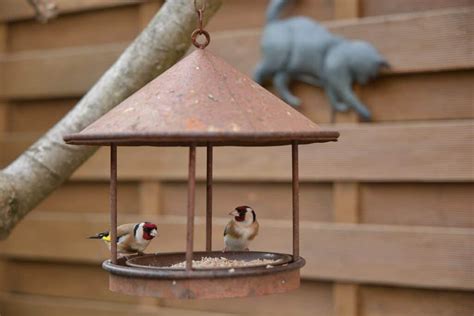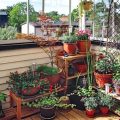How to Create a Wildlife-Friendly Balcony to Attract Birds and Butterflies
Urban living doesn’t mean you have to miss out on the joys of nature. If you’re a nature lover and want to invite birds and butterflies into your outdoor space, transforming your balcony into a mini sanctuary can be a rewarding experience. This guide walks you through practical tips for attracting wildlife to your balcony by focusing on pollinator-friendly plants, balcony gardening methods, and outdoor design that supports biodiversity. With the right plant care and approach, even the smallest urban balconies can become vibrant ecosystems.
Key Concepts
- Pollinator-friendly plants: Plants that naturally attract birds, butterflies, bees, and other beneficial insects.
- Balcony gardening: Growing plants in small outdoor spaces using pots, containers, or vertical methods.
- Biodiversity: Encouraging a variety of species in your garden to create a balanced and healthy ecosystem.
- Container gardening: A method of growing plants in containers or pots, ideal for small spaces like balconies.
Historical Context
The practice of balcony gardening dates back to ancient civilizations. Urban dwellers in ancient Rome, Egypt, and Greece often maintained small gardens in their courtyards and balconies. These green spaces were not just for food production but also served as sanctuaries for wildlife. In modern times, the trend has evolved into an environmentally conscious movement, emphasizing biodiversity and the importance of pollinator-friendly plants in supporting urban ecosystems.
Current State Analysis
Urbanization has fragmented natural habitats, but urban gardening and balcony gardening have emerged as key tools in restoring biodiversity in cities. With the rise of awareness around climate change, individuals are becoming more intentional about supporting pollinators and wildlife. Cities are increasingly becoming part of the solution as urban residents adapt their small spaces to attract wildlife. However, challenges such as limited space, pollution, and lack of awareness about the needs of pollinator-friendly plants persist.
Practical Applications
Here’s how you can create a thriving ecosystem on your balcony:
- Choose native plants: Select plants that are native to your region. Native plants are better adapted to local conditions and more likely to attract native wildlife like birds and butterflies.
- Plant in layers: Use vertical space efficiently by growing plants of varying heights to mimic a natural habitat. This not only increases the visual appeal of your garden but also attracts a variety of species.
- Provide food and water sources: Install bird feeders, water baths, and shallow dishes for butterflies to drink from. Birds are attracted to seeds, while butterflies will flock to sugary water sources.
- Use a variety of containers: Grow plants in different types of containers like hanging baskets, wall-mounted planters, and large pots to create diversity.
- Avoid chemicals: Pollinators are sensitive to pesticides. Opt for natural pest control methods like companion planting and organic repellents.
Case Studies
| Case Study | Outcome |
|---|---|
| Toronto Urban Balcony Garden | A small balcony garden featuring native wildflowers attracted over 10 species of butterflies within a year. |
| London Rooftop Sanctuary | An apartment building roof garden designed with bird feeders and nectar-rich flowers became a stop for migratory birds. |
| San Francisco Pollinator Paradise | A pollinator-friendly balcony garden helped increase the number of bees and butterflies in a heavily urbanized area. |
Stakeholder Analysis
- Urban residents: Primary beneficiaries who enjoy the beauty and tranquility brought by attracting wildlife.
- Local governments: Beneficiaries of increased urban biodiversity, contributing to improved air quality and reduced heat islands.
- Conservationists: Supporters of the movement, advocating for widespread adoption of urban gardening and wildlife-friendly practices.
Implementation Guidelines
To effectively implement a wildlife-friendly balcony, consider the following steps:
- Research regional plants: Consult local gardening experts or nurseries to choose the best native plants for your climate.
- Create diverse habitats: Incorporate flowering plants, shrubs, and trees to attract different species. Use trellises and plant shelves to maximize vertical space.
- Install feeders and water sources: Ensure they are kept clean and well-stocked to continuously attract birds and butterflies.
- Monitor and adjust: Observe which plants and features attract the most wildlife and make adjustments as needed. Replace underperforming plants with those more suited to the environment.
Ethical Considerations
While attracting wildlife to your balcony is beneficial, it’s essential to do so responsibly. Avoid planting invasive species that could disrupt the local ecosystem. Additionally, ensure that your wildlife features, such as water sources and bird feeders, are regularly cleaned to prevent the spread of disease among the species you attract. Be mindful of your neighbors when installing features that could potentially cause noise or mess, such as bird feeders that might attract larger animals like squirrels or pigeons.
Limitations and Future Research
One limitation of balcony gardening for attracting wildlife is space constraints. Most urban balconies are small, which limits the variety and number of plants you can grow. However, innovations in vertical gardening and container gardening techniques offer solutions to make the most of these tight spaces.
Future research should focus on the long-term impact of urban gardening on wildlife populations in highly urbanized areas. Additionally, studies on the potential of attracting wildlife to reduce urban stress levels could provide further incentive for city dwellers to adopt these practices.
Expert Commentary
Experts in urban gardening emphasize that the success of attracting birds and butterflies depends on maintaining the right balance of pollinator-friendly plants, water sources, and plant care. “The key is to treat your balcony as a small ecosystem,” says Dr. Jane Green, a biodiversity expert. “With thoughtful planning, even the smallest balcony can become a refuge for wildlife.”
Moreover, landscape architect William Grove adds, “It’s not just about plants. The design of your balcony space can make a huge difference. By layering plants and using vertical spaces, you can invite more species to visit.”
Finally, garden enthusiast Laura Hughes suggests, “Patience is crucial. You might not see birds and butterflies immediately, but give it time, and your urban gardening efforts will pay off in the form of a beautiful, wildlife-friendly balcony.”


